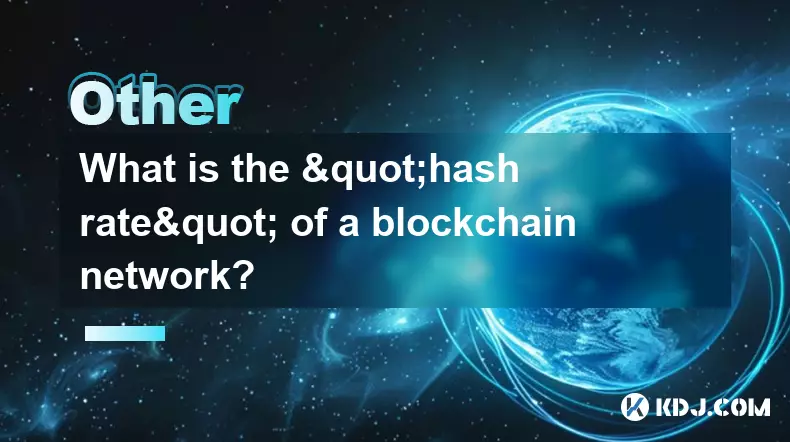-
 bitcoin
bitcoin $99177.955738 USD
-7.32% -
 ethereum
ethereum $3187.183061 USD
-12.38% -
 tether
tether $0.999809 USD
0.00% -
 xrp
xrp $2.117933 USD
-9.42% -
 bnb
bnb $906.710033 USD
-9.17% -
 solana
solana $149.367737 USD
-10.74% -
 usd-coin
usd-coin $0.999816 USD
0.01% -
 tron
tron $0.281498 USD
-0.38% -
 dogecoin
dogecoin $0.156292 USD
-8.00% -
 cardano
cardano $0.500744 USD
-10.19% -
 hyperliquid
hyperliquid $38.087358 USD
-4.58% -
 chainlink
chainlink $14.097831 USD
-8.54% -
 bitcoin-cash
bitcoin-cash $463.329916 USD
-9.22% -
 ethena-usde
ethena-usde $0.999078 USD
-0.01% -
 unus-sed-leo
unus-sed-leo $9.475862 USD
-0.79%
What is the role of cryptography in blockchain?
Cryptography secures blockchain through hashing, digital signatures, and public-key encryption, ensuring data integrity, authentication, and trust in a decentralized network.
Aug 03, 2025 at 03:42 pm

Understanding the Foundation of Blockchain Security
Cryptography is the cornerstone of blockchain technology, providing the essential tools to ensure data integrity, authentication, and confidentiality. Without cryptographic techniques, the decentralized nature of blockchain would be vulnerable to tampering, fraud, and unauthorized access. Every transaction recorded on a blockchain is secured using cryptographic algorithms that make it nearly impossible to alter once confirmed. This level of security is achieved through the use of hash functions, digital signatures, and public-key cryptography, which work in tandem to maintain trust across a trustless network.
The immutability of blockchain relies heavily on cryptographic hashing. Each block contains a unique hash derived from its data and the hash of the previous block. Any change in the data alters the hash drastically, breaking the chain and alerting the network to potential tampering. This creates a self-auditing ecosystem where every node can verify the integrity of the entire chain.
How Public-Key Cryptography Enables Ownership and Identity
One of the most critical applications of cryptography in blockchain is public-key cryptography, also known as asymmetric cryptography. This system uses a pair of keys: a public key, which acts as an address visible to everyone on the network, and a private key, which is kept secret and used to sign transactions. When a user initiates a transaction, they sign it with their private key, and others can verify the authenticity using the corresponding public key.
This mechanism ensures that only the rightful owner of a digital asset can authorize its transfer. For example, in Bitcoin, if Alice wants to send BTC to Bob, she signs the transaction with her private key. The network nodes validate the signature using her public key, confirming that the request is legitimate. This process eliminates the need for a central authority to verify ownership, enabling peer-to-peer value transfer.
It is crucial to understand that losing a private key means losing access to the associated assets permanently. There is no recovery mechanism, as the system is designed to be trustless and decentralized. Therefore, users must store their private keys securely, often using hardware wallets or encrypted software solutions.
The Role of Hash Functions in Data Integrity
Hash functions play a pivotal role in maintaining the integrity of blockchain data. A cryptographic hash function takes input data of any size and produces a fixed-size output, known as a hash. The same input will always produce the same hash, but even a minor change in the input—such as altering a single character—results in a completely different hash.
In blockchain, each block contains a hash of its own data and the hash of the previous block. This creates a chain of blocks where each link depends on the one before it. If an attacker attempts to modify a transaction in a past block, the hash of that block changes, invalidating all subsequent blocks. Since the network requires consensus on the longest valid chain, such an attack would require recalculating all hashes in the chain and controlling more than 50% of the network’s computational power—a feat known as a 51% attack, which is extremely difficult and costly.
Popular hash functions used in blockchain include SHA-256, employed by Bitcoin, and Keccak-256, used by Ethereum. These algorithms are designed to be collision-resistant, meaning it is computationally infeasible to find two different inputs that produce the same hash.
Digital Signatures and Transaction Authentication
Digital signatures are a cryptographic tool used to authenticate transactions and ensure non-repudiation. In blockchain, every transaction is signed using the sender’s private key. The signature is then attached to the transaction and broadcast to the network. Nodes verify the signature using the sender’s public key, ensuring the transaction was authorized by the rightful owner.
The process involves several steps:
- The transaction data is hashed to create a unique digest.
- The digest is encrypted with the sender’s private key, creating the digital signature.
- The signature, along with the original transaction and public key, is sent to the network.
- Nodes decrypt the signature using the public key and compare it to the hash of the received transaction data.
- If the values match, the transaction is considered valid.
This system prevents impersonation and ensures that transactions cannot be forged. It also allows anyone to verify the authenticity of a transaction without needing access to sensitive information like the private key.
Securing Consensus Mechanisms with Cryptography
Cryptography is also integral to the operation of consensus mechanisms such as Proof of Work (PoW) and Proof of Stake (PoS). In PoW, miners compete to solve a cryptographic puzzle based on hash functions. The puzzle requires finding a nonce (a random number) that, when combined with the block data, produces a hash below a certain target value. This process is computationally intensive but easy to verify, ensuring that miners invest real resources to add blocks.
In PoS systems, cryptography is used to randomly select validators based on their stake, while digital signatures are used to attest to the validity of blocks. Cryptographic verifiable random functions (VRFs) may be employed to ensure fairness and unpredictability in validator selection.
These mechanisms rely on cryptographic principles to prevent malicious actors from taking control of the network. The security of the entire blockchain depends on the assumption that cryptographic algorithms are secure and that private keys remain confidential.
Practical Steps for Users to Leverage Cryptographic Security
To fully benefit from the cryptographic protections in blockchain, users must follow best practices:
- Generate strong private keys using reputable wallet software that employs secure random number generators.
- Store private keys offline using hardware wallets or paper wallets to prevent hacking.
- Verify public addresses carefully before sending funds, as transactions are irreversible.
- Use multi-signature wallets for added security, requiring multiple private keys to authorize a transaction.
- Enable encryption on software wallets and use strong passwords to protect access.
Failure to follow these steps can lead to loss of funds, even if the underlying blockchain is secure.
Frequently Asked Questions
Can someone guess my private key?While theoretically possible, the probability is astronomically low. Private keys are 256-bit numbers, meaning there are 2^256 possible combinations—more than the number of atoms in the observable universe. Brute-forcing a key is practically impossible with current technology.
What happens if two transactions have the same hash?Cryptographic hash functions are designed to be collision-resistant. While collisions are mathematically possible, no practical collision has been found in SHA-256 or Keccak-256. If a collision were discovered, it would undermine the security of the blockchain and require an urgent protocol update.
Is blockchain encryption the same as end-to-end encryption?No. Blockchain does not encrypt transaction data by default—most transactions are public. Cryptography is used for authentication and integrity, not confidentiality. Some blockchains offer optional privacy features using advanced techniques like zero-knowledge proofs.
How do I verify a digital signature on a blockchain transaction?You can use blockchain explorers or command-line tools like Bitcoin Core’s verifymessage. Input the message, signature, and public address. The tool will recompute the hash and verify the signature using elliptic curve cryptography.
Disclaimer:info@kdj.com
The information provided is not trading advice. kdj.com does not assume any responsibility for any investments made based on the information provided in this article. Cryptocurrencies are highly volatile and it is highly recommended that you invest with caution after thorough research!
If you believe that the content used on this website infringes your copyright, please contact us immediately (info@kdj.com) and we will delete it promptly.
- Bitcoin's Wild Ride: Saylor, Kiyosaki, and the Quest for $200K
- 2025-11-05 10:50:13
- Culex, Cardano, and Aster: A Crypto Cocktail of Mosquitoes, Dips, and CZ Fuel
- 2025-11-05 11:00:17
- Crypto Presales, Coin Growth, and Established Coins: Navigating the 2025 Buzz
- 2025-11-05 11:00:17
- La Culex, Crypto Investment, and Pudgy Penguins: A NYC Perspective
- 2025-11-05 10:30:13
- Zcash Defies Crypto Crash: Reversal Risk on the Horizon?
- 2025-11-05 11:00:01
- Score Big with BetMGM: NBA, NFL, and the TOP150 Bonus Code
- 2025-11-05 08:50:13
Related knowledge

What is a block explorer and how do you use it?
Oct 24,2025 at 12:36am
What Is a Block Explorer?1. A block explorer is a web-based tool that allows users to view and analyze data on a blockchain network in real time. It f...

What is the "hash rate" of a blockchain network?
Oct 10,2025 at 03:55pm
Understanding Hash Rate in Blockchain Networks1. The hash rate refers to the total computational power being used to process transactions and mine new...

What is a "genesis block"?
Oct 15,2025 at 07:55pm
Understanding the Genesis Block in CryptocurrencyThe genesis block is the very first block in a blockchain network. It serves as the foundation upon w...

Who is Satoshi Nakamoto?
Oct 15,2025 at 01:01pm
Who is Satoshi Nakamoto?1. Satoshi Nakamoto is the pseudonymous individual or group credited with creating Bitcoin, the first decentralized cryptocurr...

How does blockchain technology actually work?
Oct 11,2025 at 02:36pm
Understanding the Core Mechanism of Blockchain1. At its foundation, blockchain is a decentralized digital ledger that records transactions across mult...

What is a token economy?
Sep 20,2025 at 12:18am
Understanding the Foundations of a Token Economy1. A token economy in the context of cryptocurrency refers to a system where digital tokens are used a...

What is a block explorer and how do you use it?
Oct 24,2025 at 12:36am
What Is a Block Explorer?1. A block explorer is a web-based tool that allows users to view and analyze data on a blockchain network in real time. It f...

What is the "hash rate" of a blockchain network?
Oct 10,2025 at 03:55pm
Understanding Hash Rate in Blockchain Networks1. The hash rate refers to the total computational power being used to process transactions and mine new...

What is a "genesis block"?
Oct 15,2025 at 07:55pm
Understanding the Genesis Block in CryptocurrencyThe genesis block is the very first block in a blockchain network. It serves as the foundation upon w...

Who is Satoshi Nakamoto?
Oct 15,2025 at 01:01pm
Who is Satoshi Nakamoto?1. Satoshi Nakamoto is the pseudonymous individual or group credited with creating Bitcoin, the first decentralized cryptocurr...

How does blockchain technology actually work?
Oct 11,2025 at 02:36pm
Understanding the Core Mechanism of Blockchain1. At its foundation, blockchain is a decentralized digital ledger that records transactions across mult...

What is a token economy?
Sep 20,2025 at 12:18am
Understanding the Foundations of a Token Economy1. A token economy in the context of cryptocurrency refers to a system where digital tokens are used a...
See all articles










































































